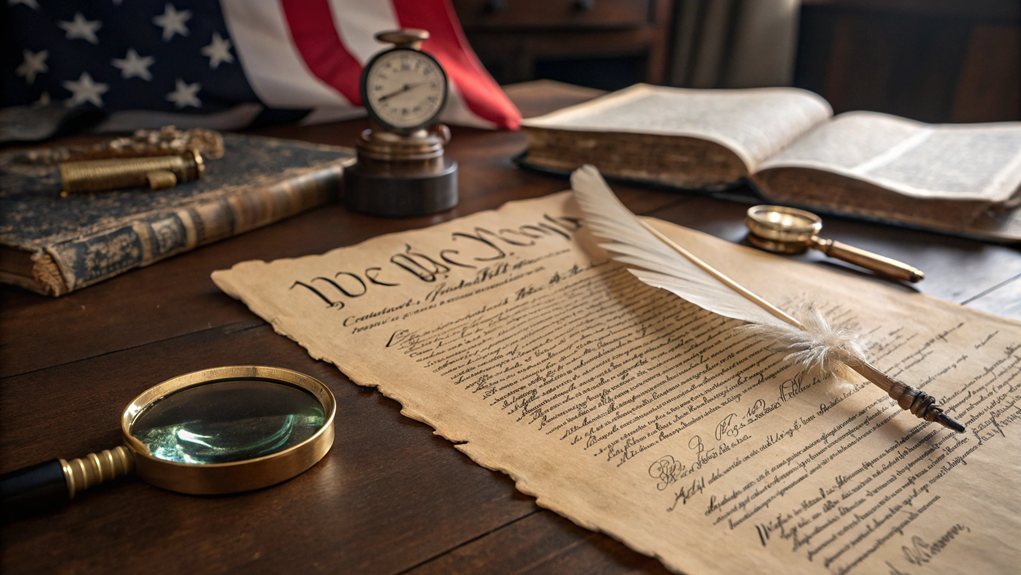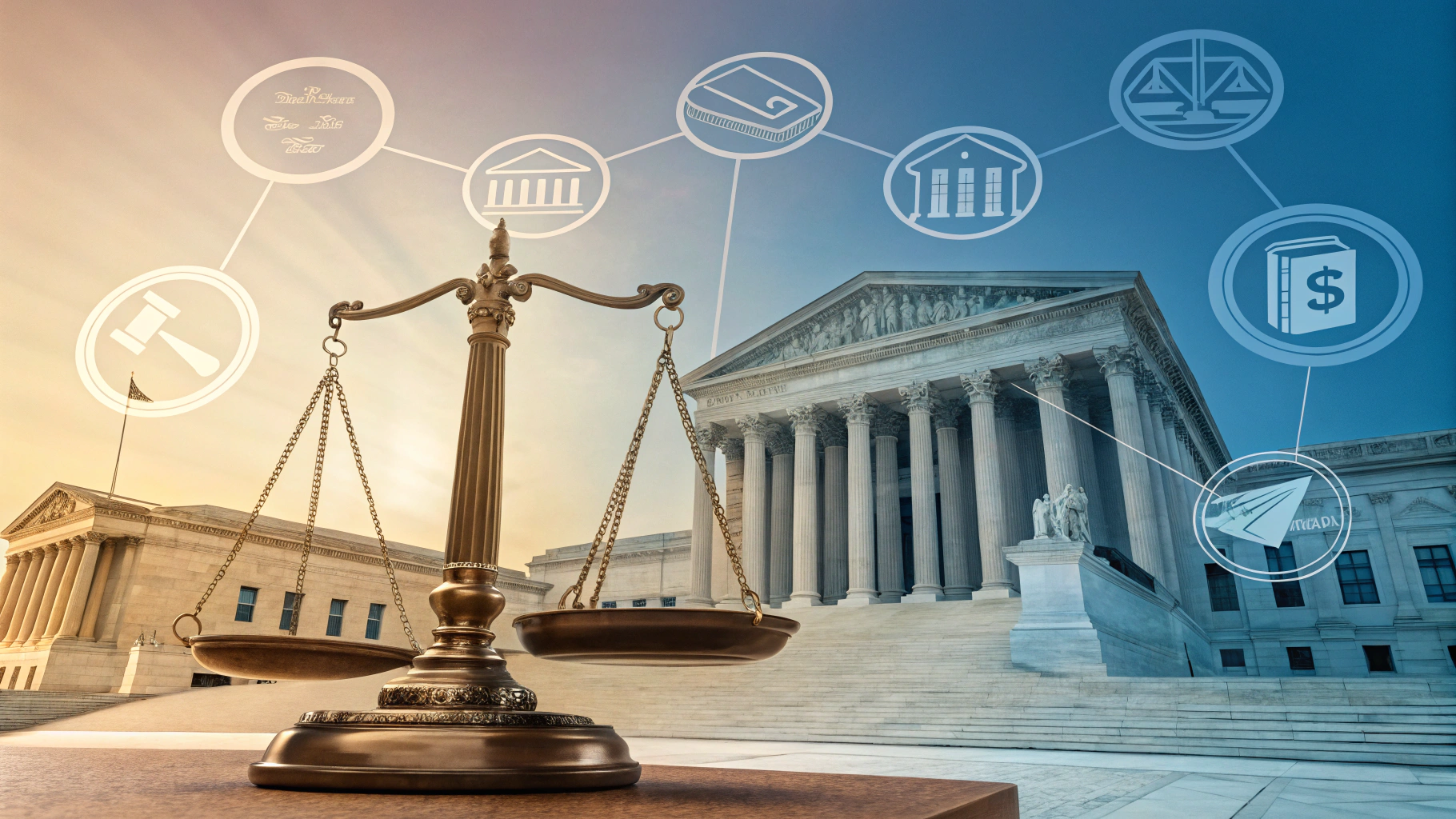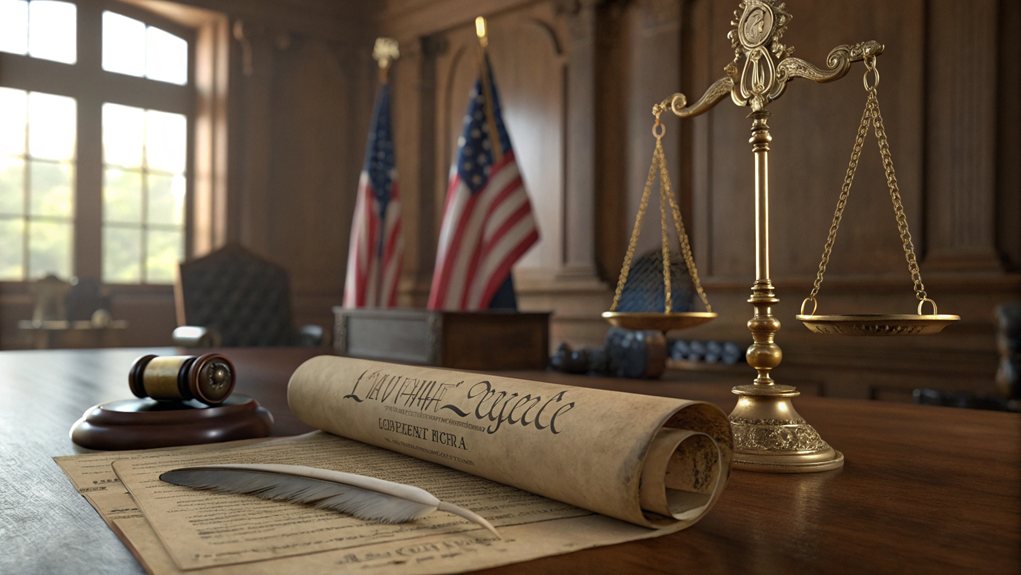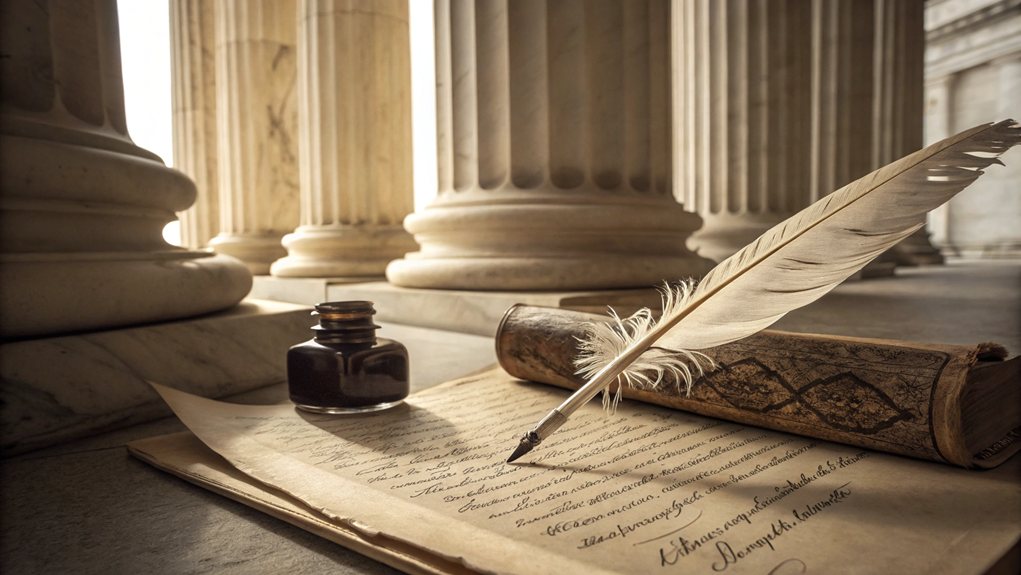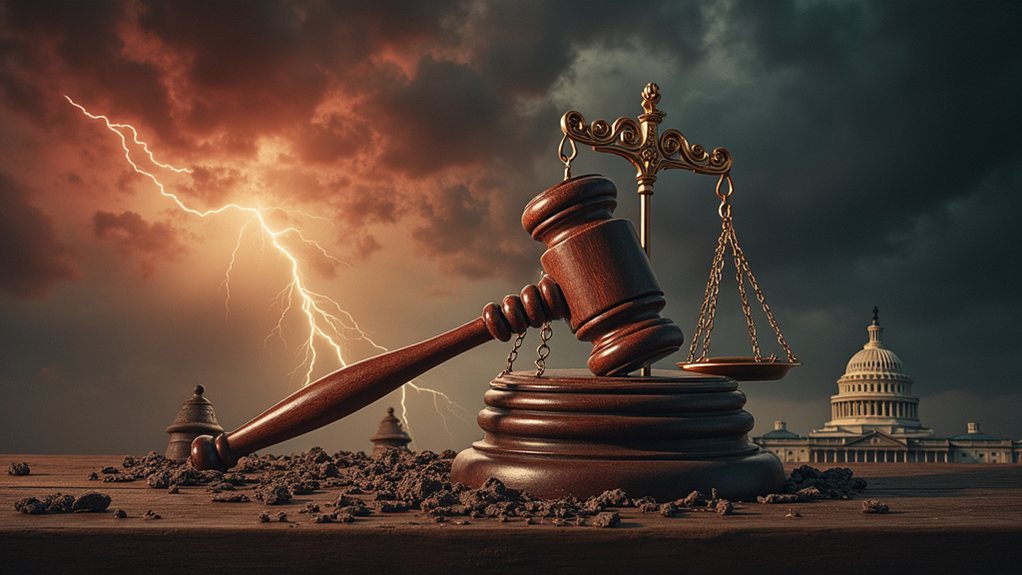The Federalist Papers are like the original cheat sheet for American democracy. Written by Hamilton, Madison, and Jay, they pushed hard for the Constitution's ratification during heated debates. These papers aren't just historical fluff; they tackled big ideas like federalism and checks on government power. They made a compelling case for a stronger central government, all while keeping individual liberties in check. If you think this is all there is to it, you'd be wrong—there's so much more beneath the surface.

In the tumultuous landscape of American history, the Federalist Papers stand out as a beacon of political thought. Written by the dynamic trio of Alexander Hamilton, James Madison, and John Jay, these essays were crafted to push for the ratification of the U.S. Constitution. Published between October 1787 and August 1788, they aimed directly at the citizens of New York—because, why not? New York was the battleground for these debates. Using the catchy pseudonym "Publius," the authors released 85 essays, hoping to win over skeptics and bolster support.
The Federalist Papers didn't just sit pretty. They were pivotal in the ratification debates, especially for New York, which finally gave the thumbs up on July 26, 1788. But let's be real—this wasn't a cakewalk. Anti-Federalists were around, waving their flags and making noise. Yet, the essays, combined with George Washington's thumbs-up and Madison's charm at conventions, worked wonders beyond New York's borders. Other states couldn't help but take notice, thanks to republication. This was particularly true as ratification by nine states was achieved by June 21, 1788, demonstrating the growing momentum for the Constitution.
Key themes emerge from these writings. Federalism? Check. The essays dissect checks and balances. Factions? Federalist No. 10 dives into that mess, arguing that a large republic can handle them. Judicial review? Federalist No. 78 lays it out. And let's not forget about executive power—Federalist No. 70 makes the case for a strong leader. They even tackled the Bill of Rights, claiming it wasn't strictly necessary. Bold, right? The Federalist Papers also critiqued the flaws in the Articles of Confederation, highlighting the need for a stronger national framework.
The Federalist Papers aren't just dusty documents. They reflect Enlightenment ideals and lay out the framework for a strong central government. They emphasize individual liberty while proposing safeguards against tyranny. A robust system of checks and balances was essential to ensure that no single branch could dominate the others, protecting the democratic ideals they cherished.
Their legacy? They're frequently cited in courtrooms today, a go-to for understanding the framers' intentions. Critics might call them elitist, and they might have a point. But the impact? Unquestionable. These essays are essential reading for anyone wanting to grasp American political philosophy. They're still relevant, slicing through time like a hot knife through butter.
Frequently Asked Questions
Who Were the Primary Authors of the Federalist Papers?
The Federalist Papers? Oh, they were written by three guys: Alexander Hamilton, James Madison, and John Jay.
Hamilton was the overachiever, cranking out 51 essays. Madison, the so-called "Father of the Constitution," gave us 29. And then there's Jay, who only contributed five.
They used the pen name "Publius" because anonymity was all the rage back then.
These essays? They aimed to sell the Constitution, and boy, did they.
How Many Federalist Papers Were Published in Total?
A total of 85 Federalist Papers were published. That's right, 85!
They weren't just tossed out there casually; they were crafted by Hamilton, Madison, and Jay, who went by "Publius." Talk about teamwork!
The essays came out in batches from October 1787 to August 1788, with the last eight trickling in later.
What Was the Main Purpose of the Federalist Papers?
The main purpose of the Federalist Papers? Simple. They aimed to sell the U.S. Constitution.
Written by Hamilton, Madison, and Jay, these essays were like a political infomercial for a new government. They argued for a strong central authority, countering the fears of Anti-Federalists.
Basically, they were saying, "Trust us, this will work!" They tackled critics head-on, addressing concerns about individual rights and the structure of power.
Effective? You bet!
Were the Federalist Papers Widely Read During Their Publication?
The Federalist Papers? Not exactly a bestseller back then.
Sure, they were published in New York newspapers, but they didn't exactly fly off the shelves. Aimed at influencing the ratification debate, they were read mostly by opinion leaders, not your average Joe.
Most people were too busy, or maybe just uninterested.
How Do the Federalist Papers Influence Modern Political Thought?
The Federalist Papers? Yeah, they still matter.
These essays are like the original cheat sheet for American politics. They explore federalism and factionalism, advocating for a strong central government.
Think of them as the ultimate guide to interpreting the Constitution. Supreme Court justices? They love quoting these guys.
And don't forget the debates about liberty versus government power—they're still as heated as ever.
